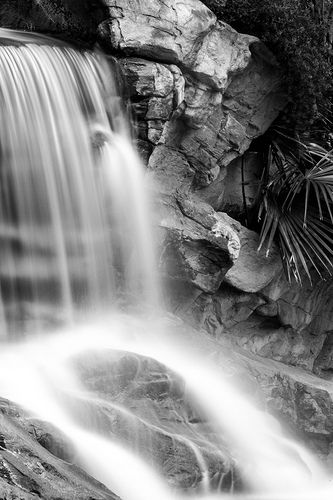Thirsty
 We’re going to step a little (a lot) beyond the lectionary this week because I think it might be important—or interesting, at least. We’re going to cover John 4:5-15 and jump to John 19:28-30. Read ahead, if you like.
We’re going to step a little (a lot) beyond the lectionary this week because I think it might be important—or interesting, at least. We’re going to cover John 4:5-15 and jump to John 19:28-30. Read ahead, if you like.
When Jesus comes upon a Samaritan city called Sychar—near the well where Jacob met his wife Rebekah—he comes across a Samaritan woman at noontime gathering water. And remember that gathering water wasn’t for fun, it was for survival and to provide for the family. Also remember that Samaritans didn’t comingle with Jews (that one is in the text as a freebie…read up on your post-Exodus Old Testament to find out why), or Google it.
Jesus approaches the Samaritan woman and asks for a drink. She’s taken aback. How is it that a Jewish man is approaching a Samaritan woman at all, let alone for a drink. She’s right to be perplexed, but Jesus reveals that if she knew who he was, she would have already crossed that cultural boundary and asked him for a drink…and he would’ve given her living water.
Hold up. What is “living water?” Basically living water, ύδωρζωυ (hudorzo), is water that is not collected: rivers, streams…etc. Ponds and lakes are collected water. Wells have collected water, while springs have living water—they produce it as its source.
But is Jesus talking about a river? Again, if you’re reading this literally, you’ll have to stretch your imagination to include the possibility that a river would pour out of Jesus somehow. Obviously there is a deeper meaning here.
Let’s go there.
Jacob gave them this well that provides water for drinking but comes along with the necessity to work for the water, plunging buckets deep down to receive just enough water for a day. Jesus says that his living water will provide for her more than a day’s worth; this water will allow her to never be thirsty again.
This sounds good to the Samaritan woman, so she asks Jesus—this time calling him “Sir” instead of “you, a Jew,” for some of this water.
Let’s imagine that the water of which Jesus speaks is the Holy Spirit. There are numerous connections between water and spirit. (Think the spirit moving over the waters in creation and how Jesus tells Nicodemus that one must be born of water and spirit to enter the kingdom of God.) This might be a solid guess, especially considering how later in John, Jesus will tell his disciples that the Holy Spirit will come to take his place with them to move among and sustain them. The movement of the Spirit is kind of like a spring of water from a divine source that drenches people in holiness.
Going with this idea that from Jesus comes the Holy Spirit, which will continue to move among the people of the world as living water continues to flow from springs through rivers and streams, we run into a predicament later in John 19:28-30.
When Jesus is about to die on the cross, he says, “I thirst.”
Whoa.
Wait a minute.
Jesus, the one who brings living water that can quench thirst eternally, the one who makes wells and the bottled water industry irrelevant…Jesus thirsts?
One remarkable thing about this passage is the utter humanity that John exhibits in including this statement of bodily need. John’s gospel account is not known for displaying a human Jesus. As the readers, we know from the very beginning that Jesus is the Christ. We’re in on all the jokes when other characters don’t get it. We know when Jesus approaches the woman at the well that she is about to be astounded by the divine, but in this moment John reminds us that Jesus was human. And in this moment we are not in on the joke as we were before. We’re left near the end of this gospel wondering how the provider of living water can thirst.
This is a mystery worth sitting in for a while—it is worth praying, meditating, and pondering the humanity and divinity of Jesus. It is worth not rushing to answer these questions and instead use this opportunity to grow more familiar with paradox.
As you think about these questions, remember last week’s reading from John, in which Nicodemus is so focused on how it all works—focused on his own certainty rather than approaching God as one approaches a life-giving relationship with another.
One of the ways that the Living God calls us deeper into relationship is by seeking our trust, our patience, and our love. Perhaps it is from that kind of approach that we are quenched by living water.
The Rev’d Curtis Farr is the assistant rector of St. James’s Episcopal Church. He blogs for St. James’s every Wednesday, offering reflections on the readings of scripture from the upcoming Sunday. His personal blog is entitled Bowing to Mystery, on which he posts sermons, articles, pictures, videos, etc.
This is a weekly contribution to the creative and imaginative process of interpreting the black and white fire of Scripture. Sometimes using an adapted process of Midrash, the author includes historical/cultural information, personal anecdotes, and other theologians’ ruminations on selected passages from the upcoming Sunday’s lectionary readings. All are welcome to journey into the fire by using the comment sections on the blog itself, or on Facebook or Tumblr.
Photo Credit: See-Ming Lee 2013, Flickr
